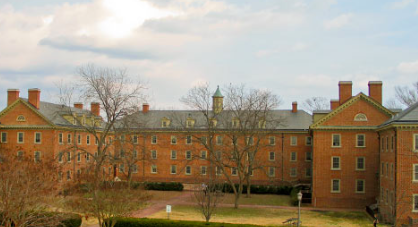The administration’s decision to open gender neutral housing represents an important step in creating a more welcoming and safe college. The move demonstrates an appreciation for the needs of people of all gender identities, especially to students whose identities do not align to the binary long written into the makeup of college campuses and, indeed, into the College of William and Mary.
Despite its limited rollout, the implementation of flexible housing is a step above lip service to equity across the spectrum of gender expression. The option will only be offered to upperclassmen and graduate students and will not include opt-outs or alternatives for freshmen.
Still, the very fact that flexible housing is offered at all constitutes progress. Currently, students living in campus housing are divided by biologically-assigned gender, regardless of actual identification. This places gender-nonconforming students in uncomfortable and potentially unsafe circumstances; according to The Atlantic, LGBTQ students experience significantly higher rates of sexual harassment and assault.
Sex-specific residence halls and bathrooms serve as reminders that certain people, certain identities and even certain bodies do not belong. These features of campus that some of us view as normal or unremarkable are actually ideological, promoting very precise, historically-rooted ideas about what it is to be male or female.
Over the regular course of campus life, students run into situations that cause dissonance, anxiety and conflict. Sex-specific residence halls and bathrooms serve as reminders that certain people, certain identities and even certain bodies do not belong. These features of campus that some of us view as normal or unremarkable are actually ideological, promoting very precise, historically-rooted ideas about what it is to be male or female. This has led to the designation of gender neutral restrooms at an increasing number of schools, including the College. Flexible housing is a necessary extension of that effort.
Opponents will argue that the new housing options are nothing more than an invitation for opposite-sex romantic couples to live together. That was part of the reason Residence Life decided against enacting a gender neutral policy in 2010. To reject gender neutral housing just on that basis, however, would be to ignore the all-too-pervasive problems LGBTQ students encounter.
We are surrounded from an early age by reminders of what male and female should look like. These signs are present in stories, toys, movies and public facilities.
Often the negative rhetoric that surrounds gender inclusiveness is a shroud for homophobia or transphobia. These feelings can come from a place of hatred and vitriol, true, but they can also come from misunderstanding. We are surrounded from an early age by reminders of what male and female should look like. These signs are present in stories, toys, movies and public facilities. They help establish the way we think and the way we see the world. They are part of our education, in a general sense.
Binary discourses (which are omnipresent, not the exclusive domain of sex-segregated halls and bathrooms) advance, in a very subtle way, certain ideas about sex and gender. With enough repetition and reinforcement, these ideas crystallize into attitudes. Sometimes these attitudes are relatively innocuous – other times, though, they are employed to justify personal and physical violence.
Transgender people are victims of an obscenely, disproportionately high rate of hate crime and murder, often with overlapping motivations or indices such as race and class. Even after trauma, victims are routinely misidentified and misrepresented by police and media.
Part of the effort we must engage in to produce a more open and kind society includes grappling with the markers and narratives that yield injustice.
This may all seem extraneous to what goes on at the College; hate crime and murder are not daily happenings here. I would argue instead that even though such transgressions are part of our past and possibility, what’s most important here is the ideology that underlies more visible, sensational forms of bigotry.
Part of the effort we must engage in to produce a more open and kind society includes grappling with the markers and narratives that yield injustice. Housing, which is such a vital resource in a person’s life, is chief among them. For a long time these resources have been the implements of intolerance. Transformed, however, and turned around, they can be the tools of equality.
Email Quinn Monette at qpmonette@email.wm.edu.





























